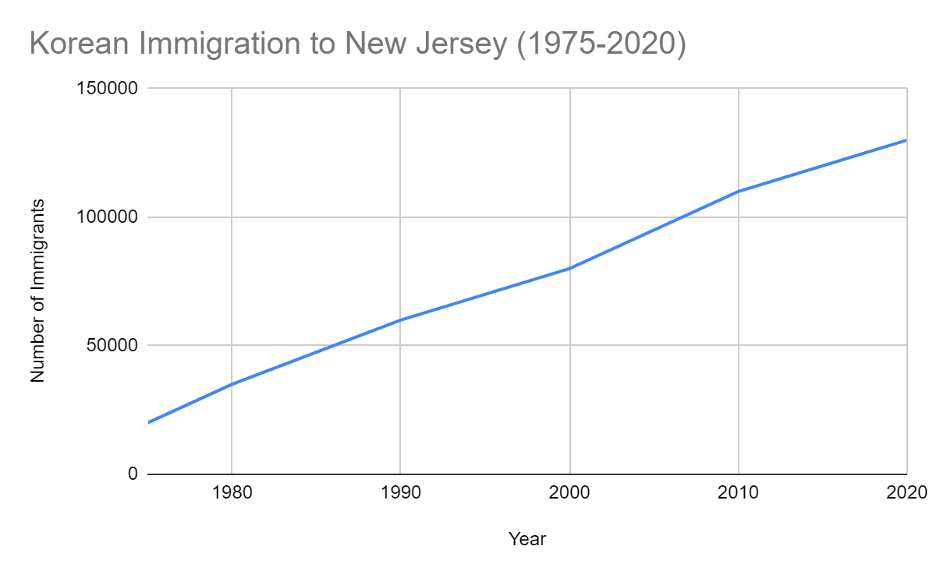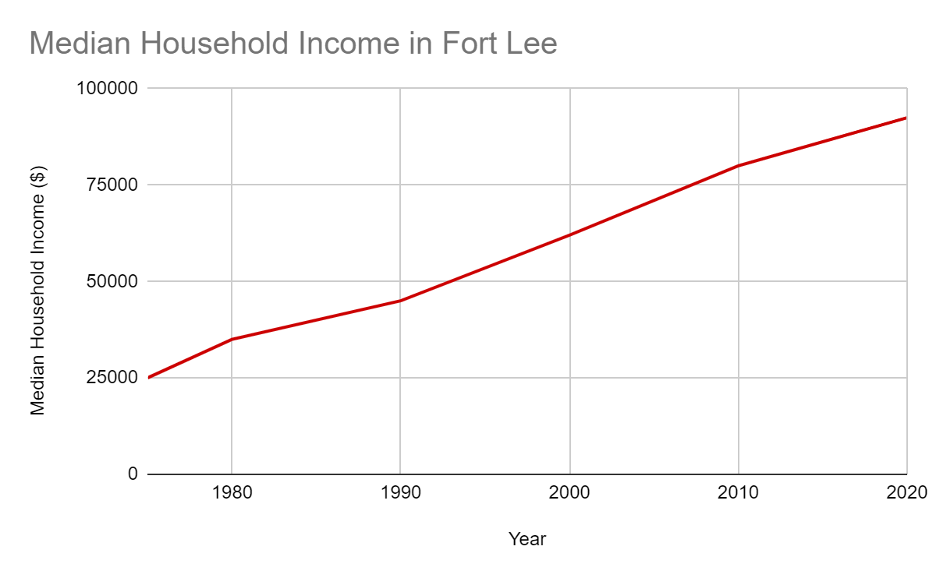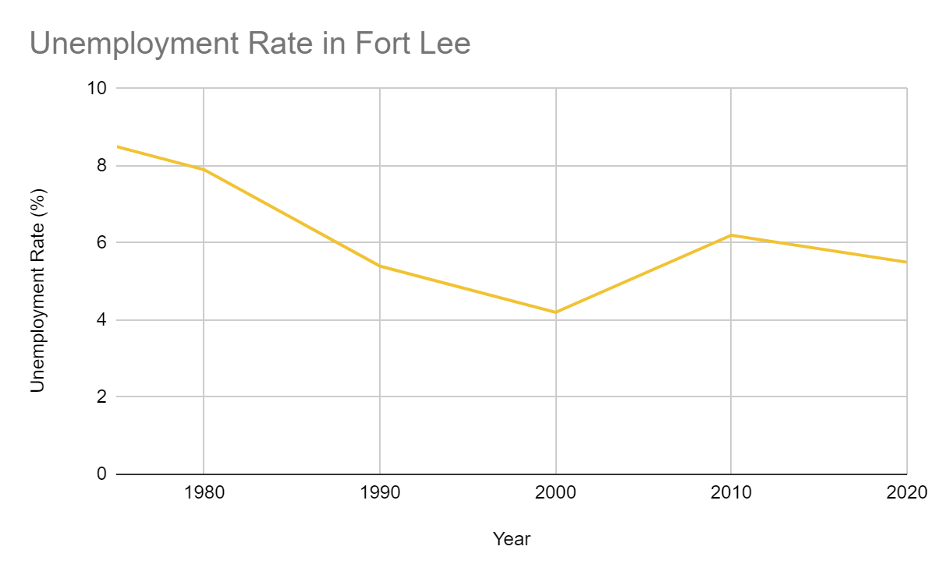THE research
An Ethnographic Analysis on the Economic Impacts of Korean Immigration in Fort Lee, New Jersey
Fort Lee, New Jersey, known for its vibrant Korean American population, offers a unique case study for examining the economic impacts of Korean immigration on local economies. This research paper aims to investigate how Korean immigrants have influenced Fort Lee’s economy, particularly through business development. By focusing on demographic data and key economic indicators, this study will explore the role of Korean-owned businesses in revitalizing Fort Lee’s commercial landscape. Analyzing the impact of Korean-owned restaurants, stores, and salons will illustrate how these businesses contribute to economic growth and enrich the socio-economic fabric of the community. The findings are expected to provide valuable insights into how immigrant communities, particularly Korean Americans, drive economic progress and shape small-town economies across the United States.
Methods
This study employs a content analysis approach to examine the economic impact of Korean immigration on Fort Lee. Content analysis as a qualitative research method allows for the systematic examination of patterns, themes, and trends within textual and media data. The methodology was chosen for its ability to analyze large volumes of secondary data on the economic contributions of Korean Americans and the outcomes of immigration across various industries and time periods. The data was sourced from multiple categories:
- Historical documents and reports
- Academic articles
- Newspaper and media articles
- Ethnographic observations
The data was analyzed to identify patterns and relationships between immigration and economic effects. The limitation of this study is the scarcity of primary sources, with most information coming from secondary sources. Because the primary sources are economic data about Fort Lee, causation cannot be proven, and only correlation can be demonstrated.
Results
To demonstrate the correlation between Korean immigration and Fort Lee's economic growth, this section will describe the economic benefits Korean immigration has provided to the US, in particular New Jersey. The main ways Korean immigration benefits Fort Lee are through increased spending, tax revenue, and business development. Because of business development, there has been an increase in job creation, property investment, gentrification, and tourism.
In addition to increasing a city's population, Korean immigration increases its tax base and grows consumer spending. Immigrants integrate into the workforce quickly, ensuring they start earning and spending immediately. In their first year of employment, 1,000 immigrants can earn about $21 million in combined annual wages, and that number will increase by 57% to $33 million after five years. This large sum gives immigrants significant spending power, which generates income for others, leading more people to participate in the local economy. The $21 million and $33 million in income translates into $1.8 million and $2.9 million in state and local taxes. These numbers do not include the sales tax immigrants pay and the people they employ spending money on purchases (Ubel 2024). Increased tax revenue translates to better infrastructure, especially in schools, giving the children of immigrants better educational opportunities, which could lead to higher-paying jobs in the future, generating more money for the economy.
Another significant economic benefit of immigration is business development. Many Korean immigrants start their own businesses. When walking around Fort Lee and noting Korean businesses, I observed that these businesses were mainly restaurants and salons. The businesses hire many local people, leading to more spending and tax revenue. Business owners renovate older buildings and update infrastructure as income increases or before they open. This generates revenue for contractors and material suppliers while improving energy efficiency and safety of the buildings through improvements and modernization. The renovations also increase property values, improving the wealth of Fort Lee (Lemekh, 2022).
This renovation also happens to houses in Fort Lee, leading to gentrification. As mentioned above, gentrification leads to increased property values. Although an increase in property values may increase the worth of Fort Lee, it also raises house prices and rent, making it more difficult for lower-income residents to afford housing. This leads to lower-income families moving out while attracting wealthier residents and professionals, especially from New York. With the increase in affluence, the landscape of local businesses has changed from small, traditional stores to upscale dining and retail.
Korean businesses also generate tourism, attracting people (typically Koreans) to nearby towns and even New York. Fort Lee could be considered an ethnic enclave for Koreans. This attracts other Koreans from nearby as they seek familiar environments. Tourism helps generate income for Korean businesses and other businesses nearby, as well as taxes for the city and state.

Figure 1. Graph showing the number of Korean Immigrants coming to the U.S. from 1975 to 2020
Source: (United States Census Bureau)

Figure 2. Graph showing the median household income in Fort Lee from 1975 to 2020
Source: (United States Census Bureau)

Figure 3. Graph showing the unemployment rate in Fort Lee from 1975 to 2020
Source: (United States Census Bureau)
Figure 2 and Figure 3 show that as more Korean immigrants came to Fort Lee, the median household income increased while the unemployment rate decreased. There were two spikes in unemployment in 2000 and 2020, but those could be attributed to the dot-com recession and the pandemic. Even though there were two spikes in unemployment, the median household income still rose steadily. The economic data shows a correlation between Korean immigration and economic benefits.
Non-Economic Benefits
Economic impacts also benefit Koreans in non-economic ways. With Korean immigrants seeking employment and starting their own businesses, they become a part of the local community. Immigrants become a part of their new society through a process of integration. Some key factors of integration are social interaction, language, and cultural adaptation (Esterline and Batalova, 2022). As Korean immigrants work, they interact with other people in the community—colleagues, bosses, or customers—and learn English. This helps immigrants feel like they are part of everyday life and not separate from the community. Cultural adaptation can include immigrants adopting their new society’s culture, but it can also involve blending their original culture into their new country’s culture. This is the case in Fort Lee, as many of the businesses opened by Korean immigrants are restaurants and specialty stores that share Korean culture with the local community.
With Korean immigrants integrating into Fort Lee’s society, the social standing of Korean immigrants has cemented and strengthened Korean culture (Waters, 2015). As Korean immigrants interacted more and more with the Fort Lee community, they became a part of it. This also had an effect on Korean immigrants who came later. As Koreans were already a part of the community, Fort Lee felt less foreign to new immigrants, and they integrated more easily. As mentioned in the previous paragraph, Korean immigrants brought Korean culture with them and integrated it into Fort Lee’s culture. However, it also worked the other way, with Fort Lee’s culture influencing the culture of Korean immigrants. The Korean businesses adapted to their environment and sold products that suited the tastes of people in Fort Lee, exposing the immigrants to their new community and culture.
Future Research
I plan to include the town of Palisades Park in future research. Palisades Park neighbors Fort Lee, located directly southwest of it. It is also known for its very high Korean population, making it an ideal place to expand my research and conduct a comparative analysis with Fort Lee. One difference between the two is how urban they are. Fort Lee is a lot more urban, while Palisades Park is more of a suburban shopping district. Palisades Park has a wider variety of Korean businesses as well. Besides restaurants and salons, it has stores that sell goods from Korea and a special kind of store called “janchi jib” that sells Korean side dishes. Palisades Park also has a more concentrated and visible Korean commercial presence than Fort Lee. In Palisades Park, there is a concentration of Korean stores along one of the main roads; in Fort Lee, they are more dispersed. These differences make Palisades Park a worthwhile place to research and compare and contrast with Fort Lee.
Another aspect worth researching in the future is how much Korean businesses attract Koreans. In other words, how much tourism do Korean businesses generate? Although tourism was mentioned earlier in the paper as an economic effect, I do not know the extent of the impact. As mentioned previously, ethnic enclaves tend to attract those of the same ethnicities, but from auto-ethnographic observations, Koreans tend to look for other Koreans a bit more strongly. However, a combination of more qualitative and quantitative research needs to be done.
Conclusion
Korean immigration has had a transformative economic impact on Fort Lee, contributing to a thriving business landscape and enhancing the cultural richness of the community. The influx of Korean-owned businesses has not only created job opportunities but has also diversified local industries, from food and retail to professional services. The immigrants who do not start businesses join the workforce, integrating themselves into the community and contributing through taxes. As this demographic continues to grow and evolve, the next generation of Korean Americans influence the economy, ensuring that Fort Lee remains a vibrant and inclusive community for years to come.
Works Cited
Anacker, K. B. (2019). Beyond the city and the bridge: East Asian immigration in a New Jersey suburb. Contemporary Sociology a Journal of Reviews, 49(1), 66–68. https://doi.org/ 10.1177/0094306119889962w
Esterline, Cecilia, and Jeanne Batalova. “Korean Immigrants in the United States.” Migration Policy Institute. Last modified April 14, 2022. Accessed October 27, 2024. https://www.migrationpolicy.org/ article/korean-immigrants-united-states
Lemekh, H. (2022). Changing the landscape of an American town: immigrantrification of a Korean ethnoburb and its cultural and economic consequences. Journal of International Migration and Integration / Revue De L Integration Et De La Migration Internationale, 24(3), 1039–1065. https://doi.org/10.1007/s12134-022-00990-x
Matsumoto, Noriko. Beyond the City and Bridge: East Asian Immigration in a New Jersey Suburb. N.p., 2018.
Noland, Marcus. “The Impact of Korean Immigration on the US Economy.” The Korean Diaspora in the World Economy.
Ubel, Marleina. “New Immigrants Drive Economic Growth in New Jersey.” New Jersey Policy Perspective. Last modified April 15, 2024. Accessed October 27, 2024.https://www.njpp.org/publications/report/new-immigrants-drive-economic-growth-in-new-jersey/
United States Census Bureau. Accessed October 28, 2024. https://data.census.gov/.
Waters, Mary C. The Integration of Immigrants into American Society. Washington DC: National Academies Press, 2015.


